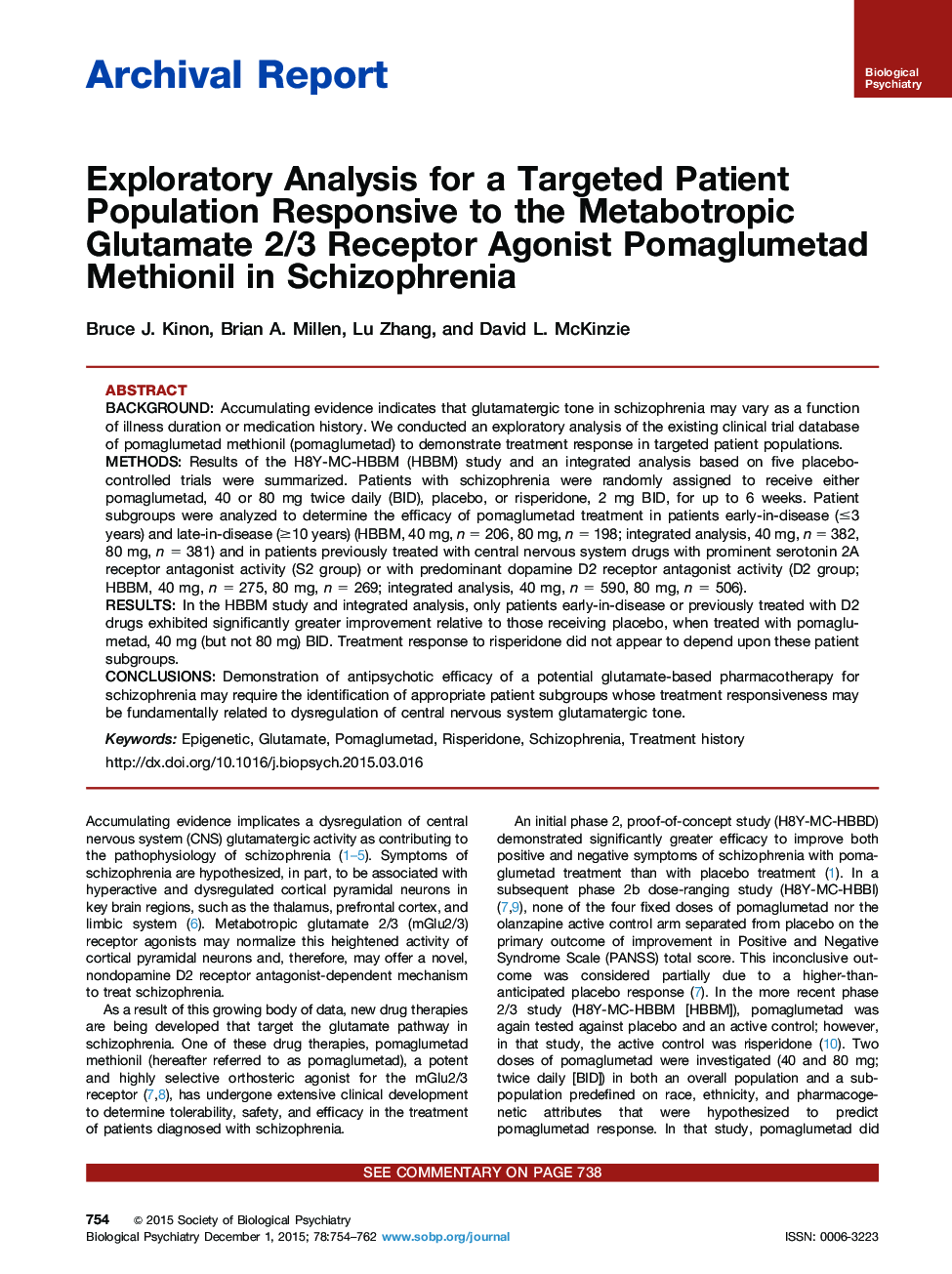| Article ID | Journal | Published Year | Pages | File Type |
|---|---|---|---|---|
| 4177173 | Biological Psychiatry | 2015 | 9 Pages |
BackgroundAccumulating evidence indicates that glutamatergic tone in schizophrenia may vary as a function of illness duration or medication history. We conducted an exploratory analysis of the existing clinical trial database of pomaglumetad methionil (pomaglumetad) to demonstrate treatment response in targeted patient populations.MethodsResults of the H8Y-MC-HBBM (HBBM) study and an integrated analysis based on five placebo-controlled trials were summarized. Patients with schizophrenia were randomly assigned to receive either pomaglumetad, 40 or 80 mg twice daily (BID), placebo, or risperidone, 2 mg BID, for up to 6 weeks. Patient subgroups were analyzed to determine the efficacy of pomaglumetad treatment in patients early-in-disease (≤3 years) and late-in-disease (≥10 years) (HBBM, 40 mg, n = 206, 80 mg, n = 198; integrated analysis, 40 mg, n = 382, 80 mg, n = 381) and in patients previously treated with central nervous system drugs with prominent serotonin 2A receptor antagonist activity (S2 group) or with predominant dopamine D2 receptor antagonist activity (D2 group; HBBM, 40 mg, n = 275, 80 mg, n = 269; integrated analysis, 40 mg, n = 590, 80 mg, n = 506).ResultsIn the HBBM study and integrated analysis, only patients early-in-disease or previously treated with D2 drugs exhibited significantly greater improvement relative to those receiving placebo, when treated with pomaglumetad, 40 mg (but not 80 mg) BID. Treatment response to risperidone did not appear to depend upon these patient subgroups.ConclusionsDemonstration of antipsychotic efficacy of a potential glutamate-based pharmacotherapy for schizophrenia may require the identification of appropriate patient subgroups whose treatment responsiveness may be fundamentally related to dysregulation of central nervous system glutamatergic tone.
